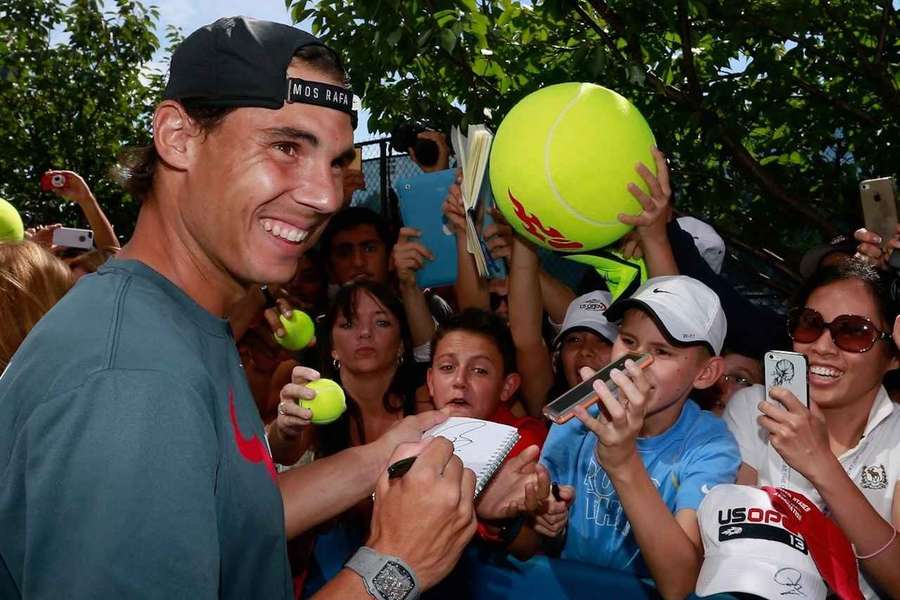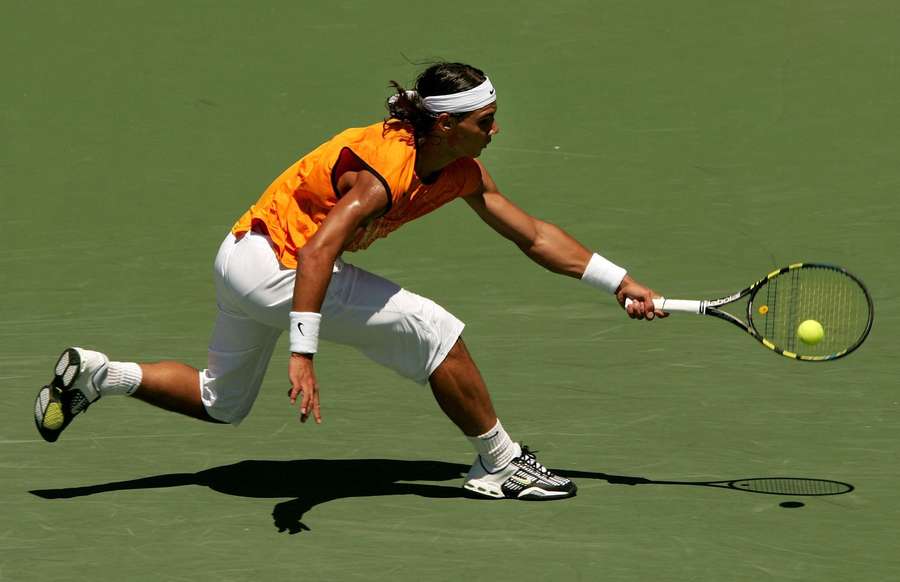From teenage star to tennis legend: Rafael Nadal's remarkable career comes to an end

When Rafa was writing messages on the camera at the end of winning a match or signing autographs for his young fans, he held the pen in his right hand.
However, this wasn't the case when using a racket, as he famously used his left hand to destroy opponents throughout his career.
The sporting genes were in the Nadal family, there's no denying that. Dad Sebastian played football in the lower divisions but wasn't quite good enough to break through the ranks at a higher level.
Uncle Miguel, however, was an excellent defender for Barcelona and the Spanish national team. He was once even ranked as one of the 50 toughest footballers in the world.
Advice from his uncle
It was somewhat of a surprise that Rafa didn't play football either. His role models were close to home and he used to go to the tennis club twice a week to play football.
When he was eight and a very promising striker in the Manacor football team, arguably the most important thing happened in his childhood - he won the under-12 tennis championship.
"That's when people started telling me I could make it to the top in tennis," he recalled in a 2006 interview with Time magazine.
Winning a tournament for boys three years older did not go unnoticed. Rafa soon began to be approached by the big tennis clubs, and so Uncle Toni stepped in.
As learned by Flashscore in a recent exclusive, Uncle Toni began to work on several things, advising his nephew to go to the net more often, even though he easily defeated his opponents from the baseline.
He also encouraged Rafa to change hands and play with his left hand, despite being naturally right-handed.
"When I was a kid, I played forehand and backhand shots with both hands. So one day he told me to try it just once. In football, my left foot was stronger, so I thought I'd try playing with my left hand. And it worked," Nadal recalled.
The ingenious plan of his uncle was born. It was time to turn the right-handed boy into a tennis left-hander.
"We'll do it as soon as possible so he gets used to it and doesn't find it strange," Toni said back when little Rafa was still combining football and tennis.
Family always first
Speaking after his final match, Nadal mentioned that he would like people to remember him not only for his titles and trophies but also because he feels he is a good person from a small village in Mallorca.
For Rafa fans, the year 2009 is certainly a significant one, when the Spaniard, after a great start to the year, failed to defend Roland Garros and lost for the first time ever in Paris (in the fourth round to Robin Soderling).
"I know how he plays and how dangerous he can be. But I wasn't calm enough for the big exchanges. I fought, but sometimes fighting is not enough," Nadal said afterwards.
He also didn't manage to defend his Wimbledon title, saying he was dealing with tendonitis in his knee. another potential reason was off-court problems, as shortly before that, in early 2009, Rafa's parents split up.
That was difficult to accept at first and potentially one of the reasons Rafa put off starting his own family until the end of his career. His first son Rafael was not born until October 2022.
The yellow and black racket
From the first time a young Rafa stepped onto the big stage, he became a popular trendsetter. The image of the cheeky teenager, who preferred to wear a tank top to show off his muscular arms, made him an unmissable icon early in his career.
The battle for his signature was won by Nike, but over time the company moulded its ambassador into less prominent outfits to boost sales of its normal clothing lines.

In terms of tennis equipment, Nadal remained loyal to the Babolat brand throughout his career. He originally started out with the Pure Drive like Andy Roddick, but because his game was very much based on heavy hitting from the back of the court, the French manufacturer developed a racket specifically for its biggest star.
The original oval cross-section of the frame was replaced by a triangle and a unique aerodynamic frame called the AeroPro Drive saw the light of day.
This style of racket has lasted to the present day, albeit with minor innovations. Furthermore, because Rafa's racket also had a distinctive yellow-black colouring, it became a hit with all tennis players.
Dominance on clay
In the pre-Nadal era, clay tournaments were won by creative players, tennis artisans who excelled in varied play and technique. Rafa, however, played a completely different brand of tennis.
Still, he became the undisputed king of clay. He changed the way we look at the game on the surface, even if there was some logic to how he adapted.
Nadal was and for a long time remained an exceptional runner. On a surface that is relatively slow, he managed to catch up with a lot of seemingly lost balls. At the same time, when he unleashed his stroke in full flight, the spin from the strings of his racket was even stronger.
"The fact that he was left-handed meant that all opponents were travelling the other way. Powerful forehands would usually come into the backhand of a right-handed player and send him off the court. Especially with his tremendous spin. It's hard to play against that," Michael Chang, the 1989 Roland Garros winner, told the BBC.
The legendary trio
In an era that will be remembered for centuries to come, tennis was ruled by three very different personalities: Roger Federer, Rafael Nadal and Novak Djokovic.
A unique trio in which everyone was completely different. All three pushed one another to greatness, using their rivalry as a source of motivation to be the best.
Rafael Nadal was one of the three greats. He started out as a young boy looking up to his role models and became a worldwide champion with a remarkable 22 Grand Slam trophies.
For all his greatness, he was a man who just wanted a dignified exit. He didn't want to end with a statement at a press conference, he wanted to say goodbye on the court.
His departure from the sport might not have been a victorious one but as was true throughout his career, he refused to give up until the very final shot of the match.
